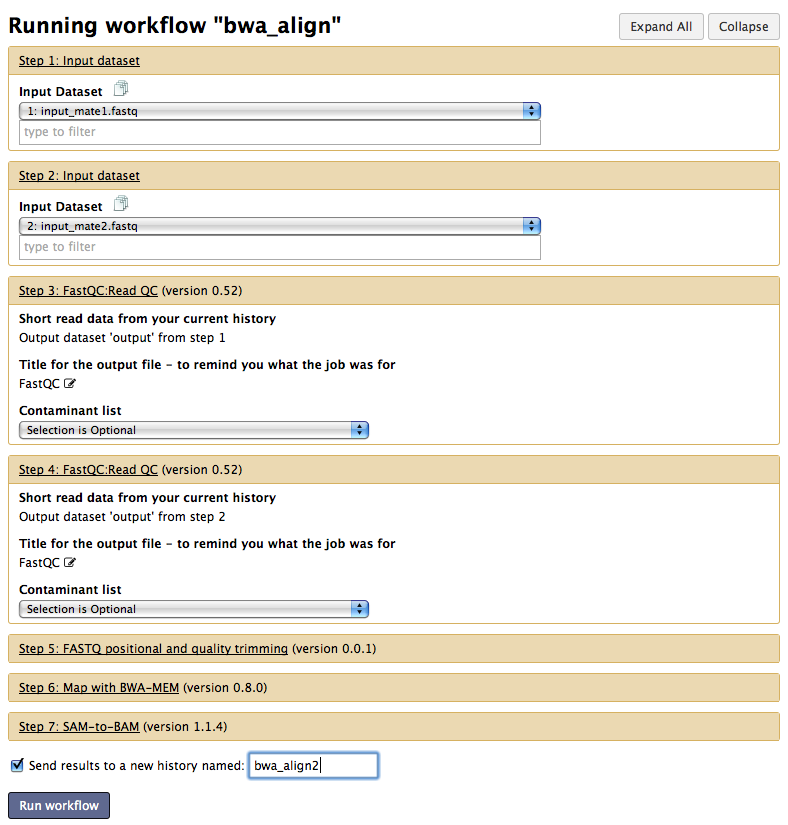Galaxy Training
Collection of training resources for Galaxy courses
Proudly part of
PART I - Preprocessing and alignment
Step 1: Create a new (empty) history
Click on the history menu icon on the right column.
Select Create New and rename it sequence_align by clicking on the history name.
If the current history is already empty, just rename it.
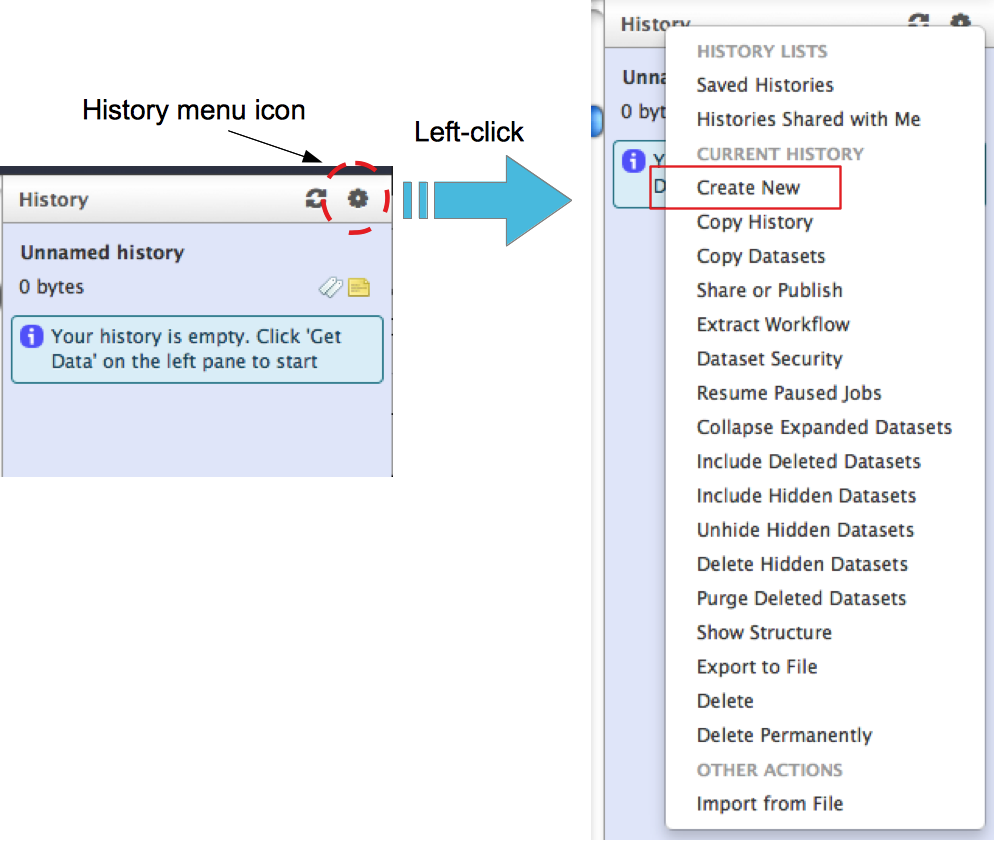
Step 2: Import read files
Galaxy offers multiple solutions for getting data: local files, FTP, external repositories and data sharing. In this training session, we are going to import data using Shared Data
The files used during this session are contained into the Quality control dataset.
Select Data libraries from the Share Data menu as shown in the figure below.
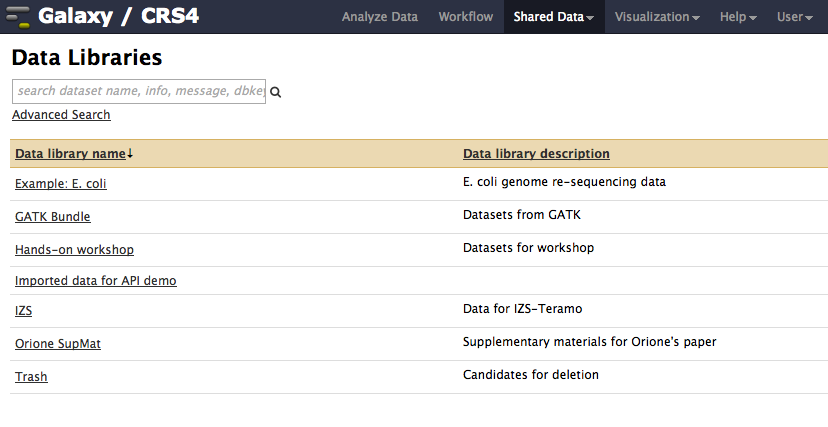
Click on Hands-on workshop to get a list of the available files. Expand the Quality control dataset and select the files containing the paired reads '’input_mate1.fastq’’ and '’input_mate2.fastq’’.

Locate the import button at the bottom of the page, select import to current history from the drop down menu and click Go

Return to Analyze Data.
Step 3: Sequence quality check
For each FastQ sequence, perform a quality check using FastQC
select the FastQC tool under NGS:Quality control, choose the desired FastQ file and execute the job

Step 4: Filtering and trimming
Analyze the FastQC results…

View the Per base sequence quality

Trim the first 3 bases at 5’ and 3’ ends
Use the FASTQ positional and quality trimming tool to cut left/right sequence bases if they do not satisfy a minimal quality value (set by the user). After trimming, if the sequence is shorter then a given length it’s removed from the the resulting FastQ file. Its mate sequence is removed too. Unpaired good sequences are kept in a separate file.
Select the paired-reads files and set the parameter values as follows
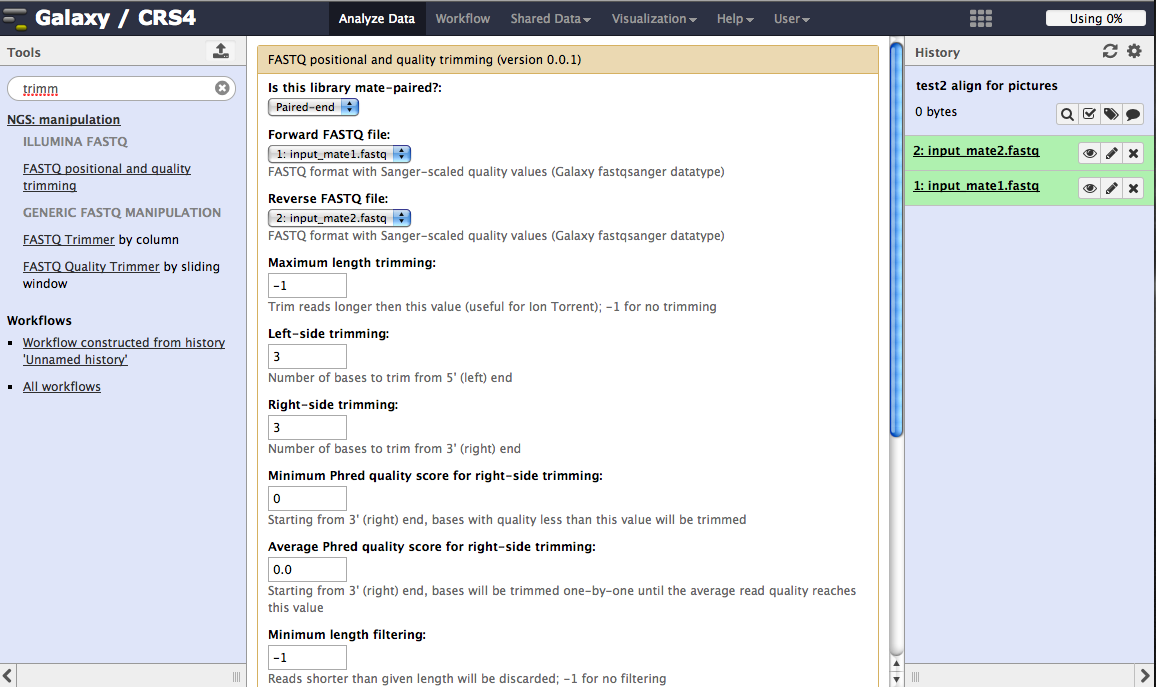
Step 5: Sequence alignment
Use BWA-MEM to align the paired reads to the genome.
Mapping reads with BWA-MEM
The next step is the alignment of the processed reads to the reference genome using BWA, a fast software package for mapping low-divergent sequences against a large reference genome, such as human.
- Align the FASTQ files against the hg19 Full reference genome.
- Is this library mate-paired?: select ‘‘Paired ends’’ and choose the two filtered paired FastQ files

The output of the analysis will be a file with the alignments in SAM format.
:information_source: Sequence Alignment/Map (SAM) format specification: http://samtools.github.io/hts-specs/SAMv1.pdf
Step 6: Convert SAM to BAM
Open the SAM-to-BAM tool under NGS: SAM Tools.
Choose the SAM alignment.
Select hg19 Full as reference sequence and execute.
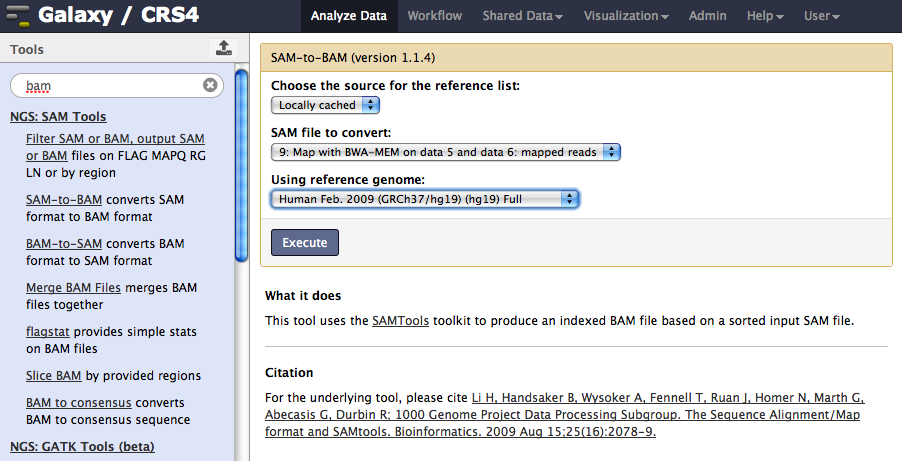
Step 7: Display BAM data using the UCSC Genome Browser
Select a bam output of SAM to BAM tool and choose the option ‘‘Display at UCSC main’’.

Example of UCSC Genome view
Jump on the genome to the PLK1S1 gene by typing its name in the box above the picture and check the coverage of the exons.
Tip: you can change the way your custom track is displayed by using the drop-down control under the section Custom tracks, just below the picture. Select the pack option.
Zoom-in at the level of a single exon and you should see the read pairs properly mapped linked by a black line.
Q: can you find reads aligned with mismatches (vertical red lines). Do you think they are sequencing errors or ‘‘real’’ variations in your sample?
Part II - Building and running a workflow
Step 8: Extract a workflow from history
Open the history menu and click on Extract Workflow
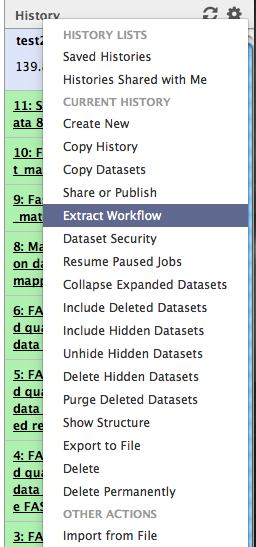
Rename your workflow “bwa_align” and click on  .
.
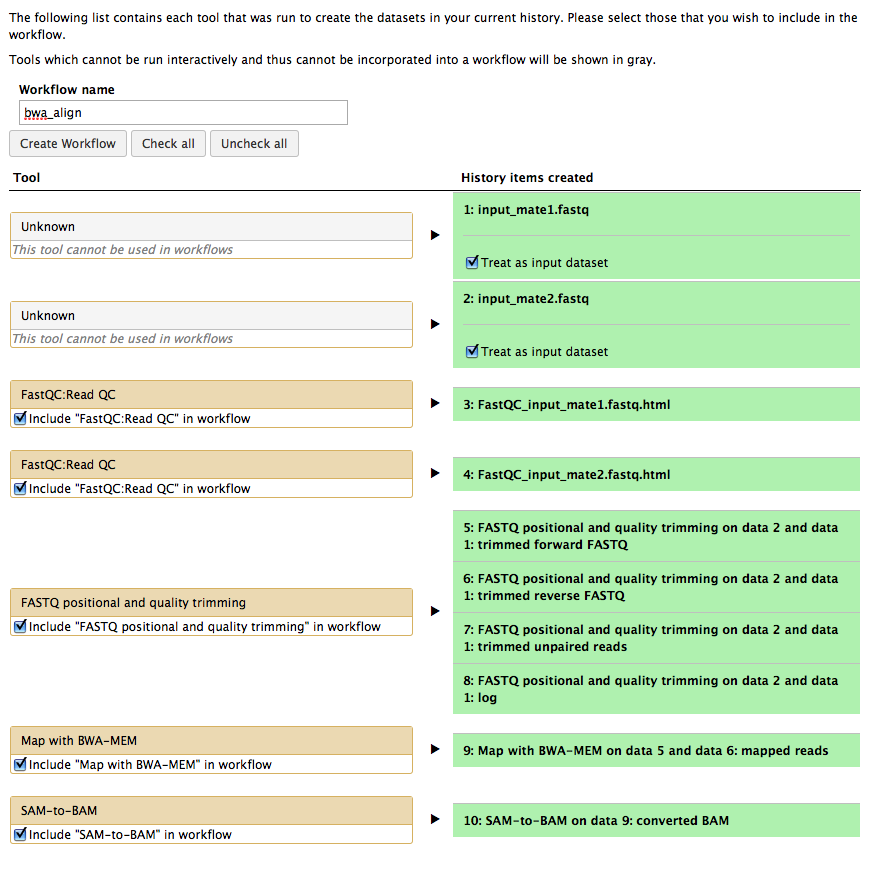
Step 9: Edit workflow
Select the Workflow tab in the galaxy menu bar.

Edit the “bwa_align” workflow.

'’A graphical workflow editor will open’’
Here, you can modify all the program parameters and select the output files that will be displayed in your history by checking the proper check boxes.
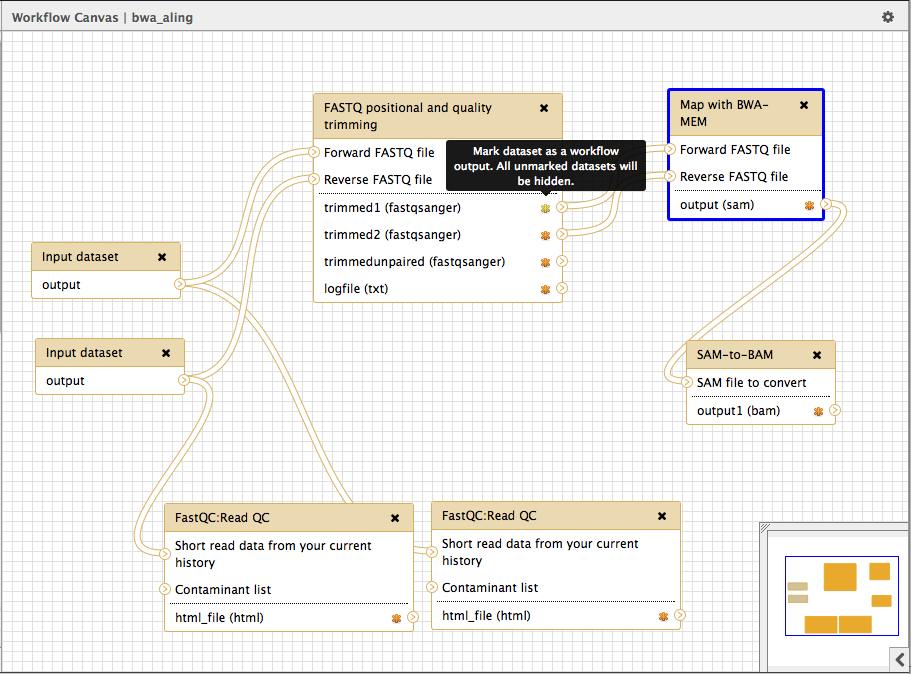
Save and Run your workflow
Now can save your wokflow and it again (using the top right menu)
Run window
